From kamikaze pilots to Russian bears: the A to Z of the 2019 Rugby World Cup in Japan
From Russian bears to Shiggy Konno, Jerome Garces and Eddie Jones, the 2019 Rugby World Cup is full of intrigue, colour and some serious personalities. Here are 26 reasons why you shouldn’t miss a second.

World Cup
Don't miss out on the headlines from World Cup. Followed categories will be added to My News.
Have you heard about the Welwitschias? What about Jerome Garces, or Shiggy Konno?
No, well read on for our A to Z guide of the Rugby World Cup (even if you do it’s well worth your time).
Stream the Rugby World Cup 2019 on KAYO SPORTS. Every match Live & On-Demand on your TV, computer, mobile or tablet. Get your 14 day free trial >

A is for ALL Blacks.
The favourites. The defending champions. The most successful team in the history of the sport. The Harlem Globetrotters of rugby. The one thing about New Zealand that the rest of the world has actually heard of. Yada yada. The All Blacks won the first Rugby World Cup and the past two, but cracks have started appearing in recent seasons. They’ve lost their No. 1 ranking, lost twice to Ireland, lost once and drew with South Africa and got spanked by Australia in Perth last month. Nervous times for New Zealand fans. Exciting times for everyone else.
B is for BEARS.
The Russian Bears. As fearsome as that sounds, we presume it’s short for Care Bears. These guys are terrible. Beyond terrible. They leaked 13 tries against Italy in one match last month. It usually takes the Italians a season to score that many tries. Sometimes two seasons. Russia have also been beaten by Spain, Romania, Georgia and Uruguay this year, which, in rugby terms, is about as low as you can go. They did scrape a win over Germany, which would be impressive in almost any other sport. How did they even qualify for this?
C is for CARDS.
Yellow and red. Expect to see plenty of disciplinary cards in this tournament. As the powers that be turn the sport of rugby union into a less violent version of Monopoly, virtually everything that involves contact or backchat or too-tight shorts is now illegal. The eight tournaments so far have seen 16 red cards, or an average of two each. Expect the figure to be closer to five or six this time around.
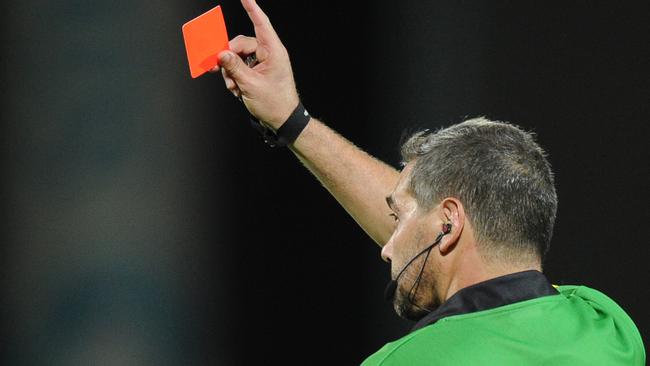
D is for DRUGS.
Yep, the noble sport of rugby is not immune to the scourge of drugs. It’s not up there with weightlifting, cycling, swimming and those dodgy bridge players, but there have been a few naughty boys in recent years and World Rugby officials are desperate to avoid a scandal at their sport’s centrepiece tournament. Just the other day, gifted Springbok winger Aphiwe Dyantyi tested positive for a banned substance. He scored two tries against the All Blacks last year and the New Zealand players might have been muttering, “What’s he on?” as they were left sprawled on the turf. It would be a brave man to bet on a clean World Cup.
E is for EDDIE Jones
He’s 50 per cent Japanese, 50 per cent Australian and 100 per cent mouth. But he can coach. He’s now in charge of England, who are a huge chance in this tournament. Last time out, Jones coached minnows Japan to a shock win over South Africa. What’s he going to do with a good team?

F is for FRANCE
Everybody’s second team. If your team gets knocked out, hop over to France — after being losing finalists three times, third once and fourth twice, no one would begrudge Les Bleus the trophy. They’re not without a chance, either, despite their long odds at the bookies. They’re showing signs of form after a barren few years and a win over Argentina will get them to the quarters. Then, it’s probably Australia, and that score could be anything. To either side.
G is for Jerome GARCES
The French referee is in charge of the mouth-watering and possibly tournament-changing pool match between New Zealand and South Africa. In their illustrious 114-year history, the All Blacks have had only four players sent off — and two of them were dismissed by Garces. What odds for a hat-trick?
H is for Michael HOOPER
The Australian flanker is the best backrower in the game and the player that most Wallaby fans are pinning their hopes on. And if his mate David Pocock is at his best, all bets are off. If you can select two of the world’s best players in the same backrow, you’re three-quarters of the way to a win before you even kick off.
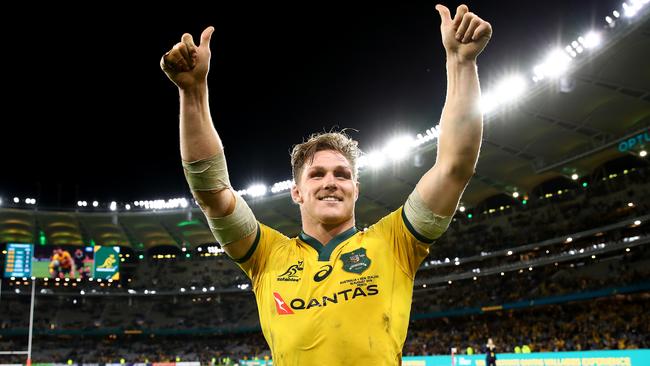
I is for ISRAEL Folau
The brilliant Australian fullback won’t be at the World Cup — unless one of the TV stations makes the ballsiest commentator appointment of all time — but he deserves a mention. Folau was kicked out of the game for saying online: “Warning — Drunks, Homosexuals, Adulterers, Liars, Fornicators, Thieves, Atheists, Idolaters. HELL AWAITS YOU”. Folau’s views won’t be missed in Japan, but his rugby ability will be. Especially if the stand-in Wallaby fullback keeps treating every up-and-under like an Exocet missile.
J is for JAPAN
it’s where all this takes place. It’s a funny old place. Old being the operative word. With one of the world’s highest ratio of pensioners and lowest birth rates, more adult nappies are sold in the country than babies’ nappies. Which is a bit messed up, whichever way you look at it. Other titbits include the fact that 90 per cent of mobile phones sold in the country are waterproof because Japanese people like using them in the bath or shower. Locals avoid the No. 4 (shi) because it is the same word for death/deceased, and most buildings don’t have a fourth floor. Especially the single-storey ones. Boom, boom. Oh, and Japan and Russia never signed a peace treaty after the Second World War so are officially still at war. That should make for an interesting opening match to the tournament.
K is for Shiggy KONNO
The man who almost single-handedly brought Japan to rugby’s top table, paving the way for the country to host the World Cup. But it almost didn’t happen for the former kamikaze pilot. On his 23rd birthday in July 1945, Konno was told it was his turn to die for his country. Despite being a poor pilot — “hit an American battleship? I couldn’t hit America” — Konno wrote his will, sent a letter to his parents and was given a bottle of sake to drink on the morning of the mission. He drank the whole bottle a few days early and wasn’t happy when they wouldn’t replace it. But then the Japanese surrendered on August 14 and former prop Konno lived long enough to see his dream of Japan playing in a Rugby World Cup becoming a reality.
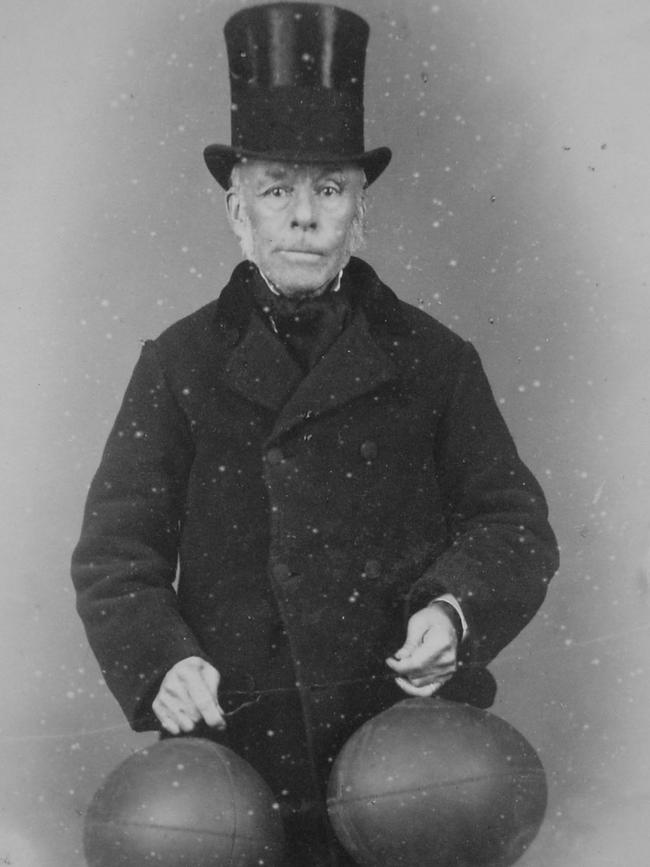
L is for Richard LINDON
He essentially invented the rugby ball. Or at least the method of blowing up a pig’s bladder and surrounding it with leather panels. Spare a thought for Mrs Lindon, though. Back in the day before air pumps, the balls had to be inflated by hand. Or mouth, to be more accurate. So as well as running her own employment agency for servants, Mrs Lindon had to blow up all her husband’s balls. Oh, behave yourself. Breathing in bacteria from diseased pigs’ bladders is said to have been behind the premature death of Mrs Lindon, who was also the mother of 17 children.
M is for MICHAEL Cheika
The Wallabies coach, of course. Did well at the last World Cup by making the final and not getting embarrassed, but things have since gone a bit pear-shaped. Indeed, any other coach of one of rugby’s heavyweights would surely have got the boot by now. In 14 games against New Zealand, Cheika has won three; in eight against South Africa, he’s won three; in eight against England, he’s won, er, one; and in five against Ireland, he’s won one. So in 35 Tests against the world’s strongest teams, Australia have won eight. That’s a win rate just under 23 per cent. He’s even lost to Scotland twice, which is unforgivable.
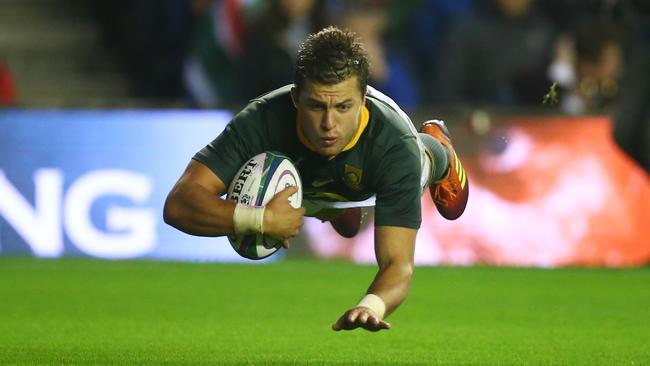
N is for the NUMBER 10
No team wins this trophy without a world-class No 10, which is perhaps not the best news for Wallaby fans. And with the All Blacks still deciding who their best No. 10 is, the spotlight goes on South Africa (Handre Pollard) and England (Owen Farrell). If either or both of these backline generals avoids injury, they have a huge chance of hoisting the trophy.
O is for Number ONE
So which team goes into the World Cup as the planet’s No. 1-ranked rugby team? Funny you should ask that. After what seemed like five decades at the top, the All Blacks were toppled last month by, er, Wales. Yep, the same Wales who haven’t beaten New Zealand in a rugby match since 1953. Six Nations champions Wales were then almost immediately overtaken by Ireland, despite Ireland losing to, er, Wales this year. Poor old Wales lost to Ireland by nine points and went from No. 1 to No.5. Ireland are followed by, in order, New Zealand, England, South Africa and Wales. Australia are at No.6. Namibia, at No. 23, are the lowest-ranked team at the World Cup.

MORE RUGBY WORLD CUP NEWS
P is for POACHING
That’s what rugby fans call it when one country selects a player born in another country. There’s a lot of it going on and the purists say it’s killing the world game. New Zealand and Australia are not shy in selecting Pacific Island-born players, while England will select anyone. Ireland, France and Scotland, likewise. Scotland’s Six Nations squad this year had 16 overseas-born players in it. That’s more than a whole team. You have to wonder how good Fiji and Samoa would be if all the top teams in the world gave back their Fijian and Samoan players. And how not as good the top teams would be. Take the Vunipola brothers, Manu Tuilagi and Joe Cokanasiga away from England and the quarter-finals seem a long way off. That’s four of their top six players. And check out the Japan team. Some of those blokes don’t look very Japanese...
Q is for former Wallabies star QUADE Cooper.
He didn’t make the cut.
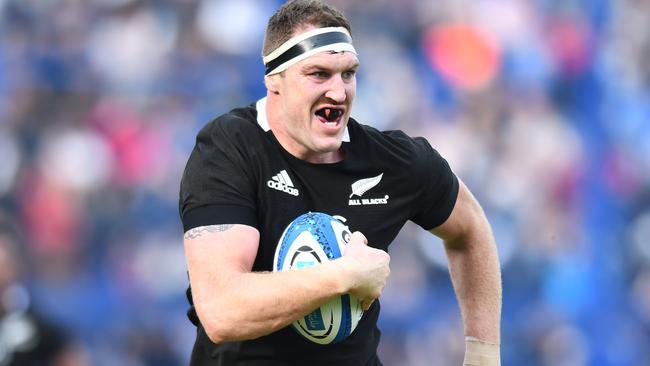
R is for Brodie RETALLICK
This guy — who looks like the love child of Lurch from The Addams Family — could hold the key to the identity of this year’s World Cup winners. The All Black star and former World Player of the Year is injured and New Zealand fans are praying to the sheep god or whatever they pray to that he is back in time for the business end of this tournament. Retallick has played 77 Tests and been on a losing side only four times. The All Blacks simply aren’t as good without him. When they lost to the Irish in Chicago in 2016, Retallick wasn’t playing. When they lost to South Africa last year, Retallick wasn’t playing. When they lost to Australia last month, Retallick wasn’t playing. You get the picture. No Retallick, no three-peat for New Zealand. You read it here first.
S is for SAMU Kerevi
If Hooper and Pocock (see H) do their thing up front, the Wallabies’ hopes of silverware rest on the ridiculously wide shoulders of Fiji-born Kerevi. The man is a tackle-busting machine, rivalled only by England’s Manu Tuilagi as a line-breaker in world rugby. He has to get his team on the front foot because the days of a backline containing Little, Horan, Campese and half a dozen Ella brothers are distant memories for long-suffering fans. Hell, Timmy Horan had four years of Test rugby under his belt before Kerevi was born.
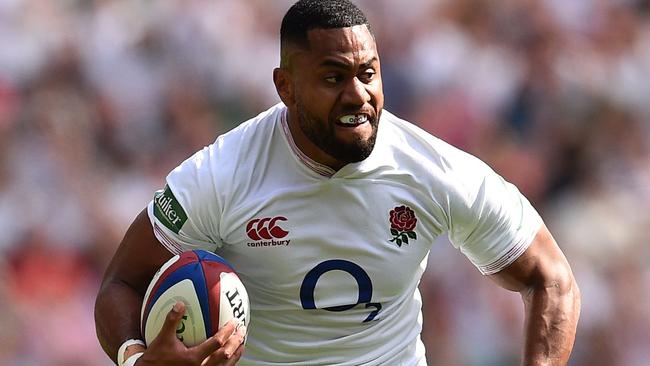
T is for TOP tryscorer
The 2019 tournament is not short of quality finishers and putting a few dollars on one player to get the most tries is tougher than ever. The All Blacks are in a ridiculously easy pool — which might bite them in the bum against more hardened teams in the playoffs — but you imagine the likes of Sevu Reece, Rieko Ioane and George Bridge are going to score dozens against Namibia, Canada and Italy. Elsewhere, England’s Jonny May and Ireland’s Jacob Stockdale are proven tryscorers and Springboks Sibusiso Nkosi, Cheslin Kolbe and Makazole Mapimpi are all lightning quick. The key to this bet is picking a player who will make it to at least the last four and has at least one soft game where he can score three or four. My money’s on Fiji’s Joe Cokanasiga. Er, I mean England’s Joe Cokanasiga. He’s at 25/1 with the English bookies, and that will do nicely.
U is URUGUAY
Which is Spanish for “cannon fodder”. Maybe. The Teros — their nickname is derived from a small bird that gets beaten up and eaten by virtually every other animal in the country — didn’t win a game in 2015 and didn’t even qualify in 2011. I can’t be bothered to look back any further, but I’m pretty sure they haven’t won the thing.
V is for VIDEO referees
Or television match officials (TMOs). These are the well-paid guys who sit up in a nice warm box and make decisions about tries or foul play that the onfield referee and his two helpers might have missed or need some help with. They stop play for a few minutes, watch 17 slow-motion replays from six different angles and then get the decision wrong. Every. Bloody. Time.

W is for WELWITSCHIAS
The nickname of the Namibia team and probably the only interesting thing about one of the worst sides in world rugby. Namibia finished dead-last in three consecutive World Cups and only the presence of Russia this year gives them hope of a dizzying 19th spot. A welwitschia is a rugged desert plant that looks like a flax bush after two elephants have rolled over it. Much how the Namibian team will feel after playing the All Blacks.
X is for X-factor
Some players have it. Most don’t. Among those to keep an eye on in this tournament are Samu Kerevi (Australia), Beauden Barrett (New Zealand), Liam Williams (Wales), Finn Russell and Stuart Hogg (both Scotland), Antoine Dupont (France), Jordan Larmour (Ireland), Joe Cokanasiga (England) and Matteo Minozzi (Italy). Don’t let the fact that Scotland have two entries in this list fool you — they haven’t got a hope.
Y is for YOKOHAMA
The venue of the World Cup final on November 2. Back in the day, it was a seaside town of 600 people. Then people started building big boats and exploring the world, like that English bloke in Shogun, and Yokohama became the gateway to the rest of Japan. It now has 3.7 million residents — second only to Tokyo — and is renowned as a tourist mecca. It’s also where the All Blacks beat the Wallabies 37-20 in a World Cup warm-up 11 months ago
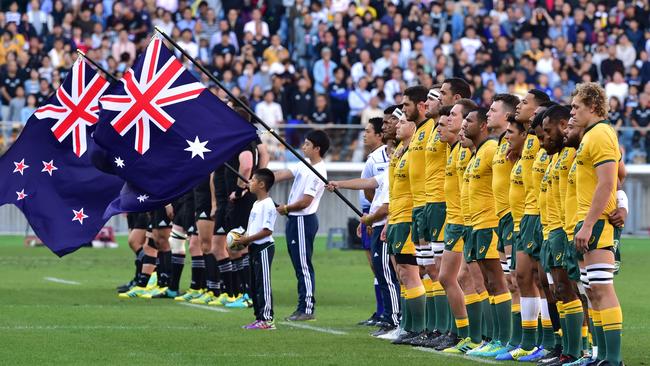
Z is for ZIMBABWE
They didn’t qualify this time. Neither did Zaire, before you ask.
